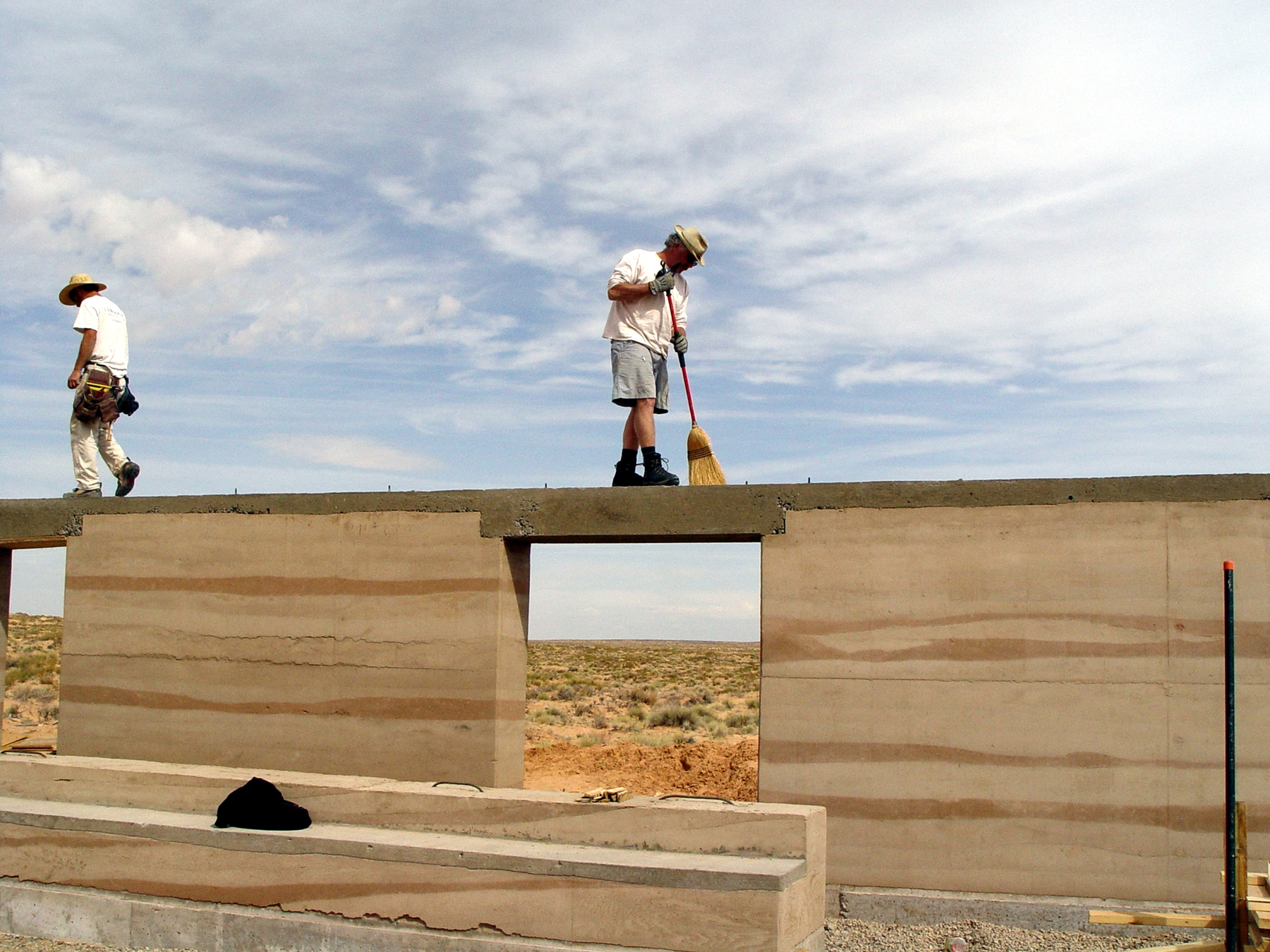
July 13, 2004 — A home University of Utah architecture graduate students built for Rosie Joe and her family in Bluff, Utah, a small town located in the San Juan River Valley, will be dedicated in a Navajo ceremony on Sunday, July 18, at noon. The site, located in southwestern Utah, is 273 miles from Salt Lake City and can be reached by traveling 16 miles south of Bluff, on Highway 191, then five miles east on San Juan County Road 443.
Eight U students built the house spring semester according to their own design, with assistance from the Utah Development Corporation, Dennis Caulfield Construction, a handful of experts and several former College of Architecture +Planning (CA+P) students. Adjunct Architecture Professor Hank Louis led the CA+P Design Build Studio course as well as obtained permits and secured donated materials and funds.
The architecture work with the American Indians in San Juan County is part of the College of Architecture + Planning’s Design Build Studio. Students receive practical, hands-on experience implementing their design work, assisting with planning and zoning, learning about construction site safety and working with community agencies and private donors. Students also learn about affordability, energy-efficiency and sustainability of materials. Louis hopes the program will eventually be more akin to Auburn University’s intensive Rural Studio program, established by the late Samuel Mockbee, with whom Louis worked. Two years ago Louis’ students completed the Kunga House, a five-bedroom home for a nine-member, Tibetan immigrant family. The first straw bale home to be built in Salt Lake City, the structure includes many value-added extras-wheelchair accessibility, a Tibetan Buddhist shrine and recycled and sustainable materials-incorporated into the design. One local news story called the project “The House That Decency Built.”
Last year Louis’ graduate students built “Studio Squared,” a mobile dwelling unit that was constructed in a campus parking lot and then moved to Bluff. The combined apartment-workspace, which will be used by future visiting professors, includes 350 square feet of outdoor deck workspace. Part of one wall is comprised of a glass garage door, which provides natural lighting, but also raises to allow the bed on castor rollers to slide out onto the deck, for sleeping under the stars.
Rosie Joe’s Bluff house is built of an old, but more recently used, energy-efficient material known as rammed earth. The 18-inch thick walls are made from compressed sand and clay dug and sifted onsite. The south wall is comprised of windows of all sizes that the students found, collected and installed. The roof is welded re-bar that butterflies into the air to become a water catchment system. Some interior walls are finished with clear acrylic, revealing packed, loose straw insulation. Interior dividing walls are faced with discarded road and highway signs, scavenged sheet metal and patina flashing metal. “In such a remote area, nothing can be thrown away-everything is overtaxed, with embodied energy,” says Louis. The ceiling is made of begged wood pallets, the gaps covered by neutral-colored canvas.
The University students left behind family and friends and moved to Bluff for all of spring semester to build the house they designed fall semester. They lived in “dorms”-Louis’ 1905 historic sandstone home.
Bluff’s rural location brought challenges to Louis’ students’ most recent project-extreme heat and cold and no electrical power for tools. They faced the additional challenge of maintaining their other course work.
The Bluff Design Build Studio Program will continue next spring with the creation and construction of another house. According to CA+P Dean Brenda Scheer, “This is a special on-going program of the college, which reflects our principles of good design that is good for people and good for the environment.”
For more information on the Navajo dedication ceremony, contact Hank Louis 801-557-4987.
